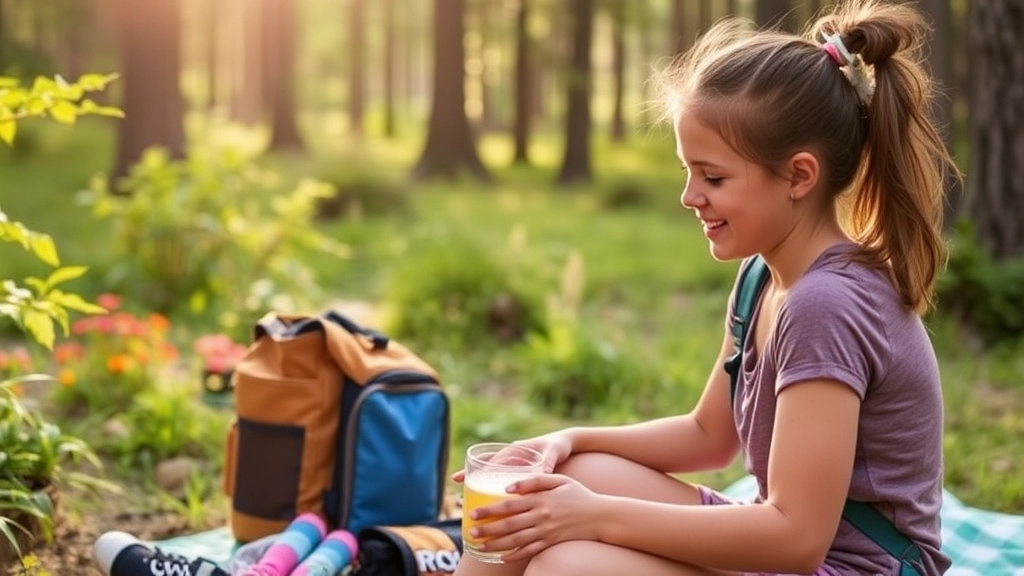Mastering the Art of Packing for Summer Camp
Ever felt the stress of packing for summer camp? You’re not alone. The thought of forgetting something essential or ending up with a chaotic mess can be overwhelming. But worry not, because this article is your ultimate guide to mastering the art of packing for camp. From creating an efficient packing list to weather-proofing your gear and organizing with packing cubes, we’ve got you covered with practical tips and hacks.
We’ll dive into essential toiletries and hygiene tips, space-saving tricks for camp gear, and even what to avoid packing. Plus, we’ll explore how labeling and personalizing items can save you from unnecessary headaches. And for that extra touch, we’ll share special surprises to include in your child’s bag to make their camp experience even more memorable. Ready to pack like a pro? Let’s get started with these summer camp packing hacks!
Mastering the Packing List
Alright, let’s get real. Packing for camp can feel like you’re prepping for a mission to Mars. What if I forget something important? What if my kid ends up with mismatched socks all week? These are the questions that keep us up at night. But don’t sweat itâI’ve got your back.
Why a Packing List Matters
First off, a packing list is your best mate. It’s not just a piece of paper; it’s your sanity saver. Here’s why:
- No More Last-Minute Panic: With a solid list, you won’t be running around like a headless chicken the night before.
- Stay Organised: Knowing exactly what’s packed helps you keep track of everything.
- Peace of Mind: You can relax, knowing you’ve covered all the bases.
The Ultimate Packing List Breakdown
Let’s break it down into bite-sized chunks. Here’s what you need:
- Clothing:
- Basics: T-shirts, shorts, trousers, and underwear.
- Layering: Hoodies, jumpers, and jackets for those chilly evenings.
- Footwear: Trainers, sandals, and maybe some waterproof boots.
- Special Gear: Swimsuits, hiking boots, or sports gear if needed.
- Toiletries:
- Essentials: Toothbrush, toothpaste, soap, and shampoo.
- Extras: Sunscreen, insect repellent, and a small first-aid kit.
- Bedding:
- Sleeping Bag: Choose one suitable for the camp’s climate.
- Pillow: A small, comfy one.
- Extras: A blanket for extra warmth.
- Miscellaneous:
- Flashlight: With extra batteries.
- Water Bottle: Reusable and durable.
- Notebook and Pen: To jot down memories or important info.
Pro Tips for Packing Like a Boss
- Use Packing Cubes: These are a game-changer for keeping clothes organised.
- Label Everything: Trust me, you don’t want your kid losing their favourite jumper.
- Weather-Proof Your Packing: Pack a few plastic bags for wet or dirty clothes.
Real-Life Example
Let me tell you a quick story. Last summer, my mate Sarah was packing for her daughter’s first camp. She thought she had it all figured out until she realised she’d forgotten a torch. Imagine her daughter trying to navigate the campgrounds in the dark. Not fun. A packing list would’ve saved the day.
For more tips on how to make your child’s camp experience memorable, check out our thoughtful ideas for summer camp care packages. And if you’re still deciding on the perfect camp, our guide to top picks for 2024 summer camps might help you choose the best one.
Efficient Clothing Storage with Packing Cubes
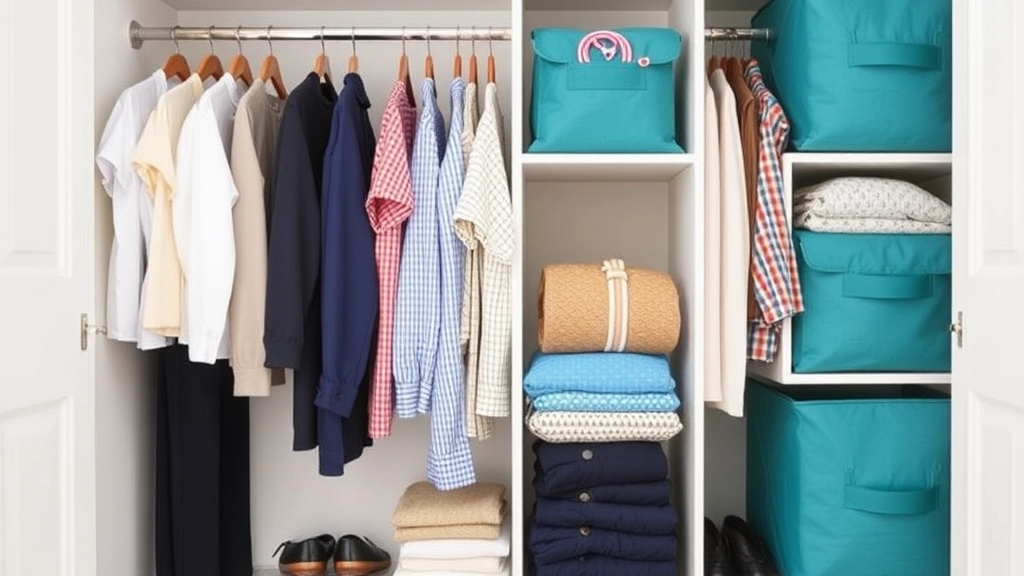
Ever felt the stress of packing for camp?
You’re not alone.
How do you fit everything in without turning your bag into a chaotic mess?
Enter: packing cubes.
Why Packing Cubes?
These little lifesavers keep your clothes organised and easy to find.
No more digging through piles of shirts to find your socks.
Packing cubes are the secret weapon for efficient packing.
How to Use Packing Cubes Like a Pro
- Sort Your Clothes by Category:
- Tops in one cube.
- Bottoms in another.
- Underwear and socks together.
- Simple, right?
- Roll, Don’t Fold:
- Rolling saves space.
- It also keeps your clothes wrinkle-free.
- Trust me, it works.
- Use Different Sizes:
- Small cubes for underwear and socks.
- Medium cubes for t-shirts and shorts.
- Large cubes for bulkier items like jackets or jeans.
Real Talk: My Own Experience
Last summer, I packed for a week-long camp using packing cubes.
Game changer.
I knew exactly where everything was.
No more rummaging around.
Bonus Tips
- Colour Code:
- Use different colours for different family members.
- Makes unpacking a breeze.
- Label Your Cubes:
- A simple label can save you time.
- Especially useful if you have multiple cubes.
The Downsides?
Honestly, not many.
But, if you overpack, even cubes won’t help.
Stick to the essentials.
Final Thoughts
Packing cubes are a must-have for efficient clothing storage.
They simplify your packing process and keep you organised.
Give them a try next time you pack for camp.
You’ll thank me later.
Still have questions?
Drop them below and let’s chat!
Ready to master the packing list? Check out our guide on Mastering the Packing List.
Got weather concerns? Don’t miss our tips on Weather-Proofing Your Packing.
Stay organised and happy packing!
Weather-Proofing Your Packing
Ever been caught off guard by a sudden downpour or unexpected chill while camping? Weather-proofing your packing is crucial to ensure you and your gear stay dry, warm, and comfortable. Let’s dive into some practical tips to make sure you’re prepared for whatever Mother Nature throws your way.
Why Weather-Proofing Matters
Imagine this: you’re out in the wild, enjoying a hike, when the sky suddenly opens up. Your clothes, gear, and mood get soaked. Not fun, right? Weather-proofing isn’t just about comfortâit’s about safety and preparedness. Wet clothes can lead to hypothermia, and damp gear can ruin your entire camping experience.
Key Tips for Weather-Proofing Your Packing
1. Choose the Right Gear
- Waterproof Bags: Invest in good quality, waterproof bags or dry sacks. These are lifesavers for keeping your essentials dry.
- Rain Covers: A rain cover for your backpack can keep your gear dry without adding much weight.
- Waterproof Clothing: Pack a waterproof jacket and trousers. Look for breathable materials to avoid getting sweaty underneath.
2. Layer Up
- Base Layers: Start with moisture-wicking base layers. They keep sweat away from your skin.
- Insulating Layers: Add a fleece or insulated jacket for warmth.
- Outer Layers: Top it off with a waterproof and windproof outer layer.
3. Pack Smart
- Plastic Bags: Use resealable plastic bags for electronics, documents, and other items that must stay dry.
- Roll, Don’t Fold: Rolling your clothes can save space and reduce wrinkles. Plus, it’s easier to fit them into waterproof bags.
4. Footwear
- Waterproof Boots: A good pair of waterproof boots can make a huge difference. Wet feet are a recipe for blisters and discomfort.
- Extra Socks: Always pack extra pairs of socks. Wet socks are the worst.
5. Shelter
- Tent: Ensure your tent is waterproof. Check for any leaks and consider bringing a tarp for extra protection.
- Groundsheet: A groundsheet can prevent moisture from seeping into your tent.
Real-Life Example
I once went camping in the Lake District, known for its unpredictable weather. Despite the forecast promising sunshine, it rained cats and dogs. Thanks to my waterproof bags and layers, I stayed dry and comfortable. My friend, on the other hand, had a miserable time with soaked clothes and gear. Lesson learned: always weather-proof your packing!
Labeling and Personalizing Items
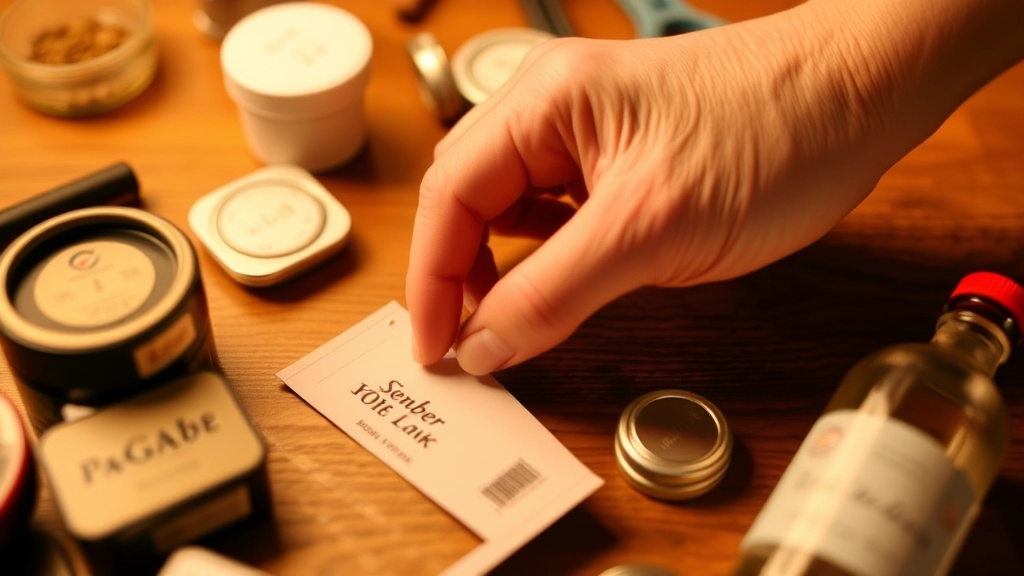
Ever lost a sock at camp? Or worse, your favourite hoodie? Yeah, me too.
Let’s talk about labeling and personalizing items.
This isn’t just about slapping your kid’s name on everything.
It’s about making sure their stuff comes back home.
Why Labeling Matters
First off, camp can be chaos.
Hundreds of kids, all with similar gear.
Labeling is your best friend here.
- Permanent Markers: Simple and effective. Write names on tags or inside collars.
- Iron-On Labels: These are great for clothes. They stick through washes and wear.
- Sew-On Labels: Perfect for durable items like jackets and backpacks.
Personalizing for Fun and Function
Now, let’s make it fun.
Personalizing isn’t just practical; it’s a way for your kid to express themselves.
- Stickers and Patches: Let them pick out some cool designs. It makes their stuff stand out.
- Coloured Tape: Wrap it around handles or zippers. Easy to spot in a pile.
- Keychains and Charms: Attach these to bags and zippers. Adds personality and function.
Real-Life Example
My mate’s son went to camp last summer.
He had a plain black backpack.
Guess what? So did half the camp.
We added a bright blue patch with his name on it.
Not only did he find it easily, but he also got compliments from other kids.
Pro Tips for Labeling
- Use Full Names: First name and last name. There might be more than one “Jack” at camp.
- Waterproof Everything: Labels can fade. Use waterproof markers or labels.
- Label Inside and Out: Especially for items like shoes and hats.
Avoid Overdoing It
You don’t need to label every single sock.
Focus on the essentials:
- Clothes
- Shoes
- Backpacks
- Toiletries
Essential Toiletries and Hygiene Tips
Alright, let’s dive into the nitty-gritty of essential toiletries and hygiene tips for camp. We all know that staying clean and fresh while camping can be a challenge, but it doesn’t have to be a nightmare. So, how do you pack the right stuff without overloading your bag? Let’s break it down.
Real Questions and Worries
Ever been on a camping trip and realised you forgot your toothbrush? Or maybe you packed too much and couldn’t find what you needed when you needed it? Yeah, we’ve all been there. The key is to strike a balance between packing enough to stay clean and not bringing your entire bathroom cabinet.
Must-Have Toiletries
Let’s get to the essentials. Here’s a quick list of must-haves that will keep you fresh without weighing you down:
- Toothbrush and Toothpaste: Obvious, but often forgotten. Go for travel-sized toothpaste.
- Soap or Body Wash: A small bar or travel-sized bottle works wonders.
- Shampoo and Conditioner: Again, travel-sized. Or better yet, use a 2-in-1 product.
- Deodorant: Trust me, everyone will thank you.
- Hairbrush or Comb: Keep it compact.
- Razor: If you need it, pack it. Disposable ones are lighter.
- Feminine Hygiene Products: Be prepared, even if you don’t think you’ll need them.
- Hand Sanitiser: A lifesaver when water is scarce.
- Wet Wipes: For a quick freshen-up when a shower isn’t an option.
Hygiene Tips for Camp
Now, let’s talk about staying clean. Here are some practical tips:
- Portable Showers: If the campsite doesn’t have showers, consider a solar shower. It’s a bag you fill with water, leave in the sun, and voila, warm water for a quick rinse.
- Dry Shampoo: Keeps your hair looking fresh without water.
- Biodegradable Soap: Better for the environment and just as effective.
- Keep a Routine: Try to stick to your usual hygiene routine as much as possible. It helps you feel normal and comfortable.
Space-Saving Hacks
We all love a good hack, right? Here are some space-saving tips:
- Multi-Use Products: Choose items that serve more than one purpose. For example, a soap that works for both body and hair.
- Travel Containers: Decant your regular products into small, reusable containers.
- Compact Towels: Microfiber towels are lightweight and dry quickly.
Personal Stories
I remember my first camping trip. I packed everything but the kitchen sink, and it was a disaster. I couldn’t find anything when I needed it, and I ended up not using half of what I packed. Since then, I’ve learned to keep it simple. One time, I even forgot my soap and had to borrow from a friend. Lesson learned: always double-check your list.
Space-Saving Tips for Camp Gear
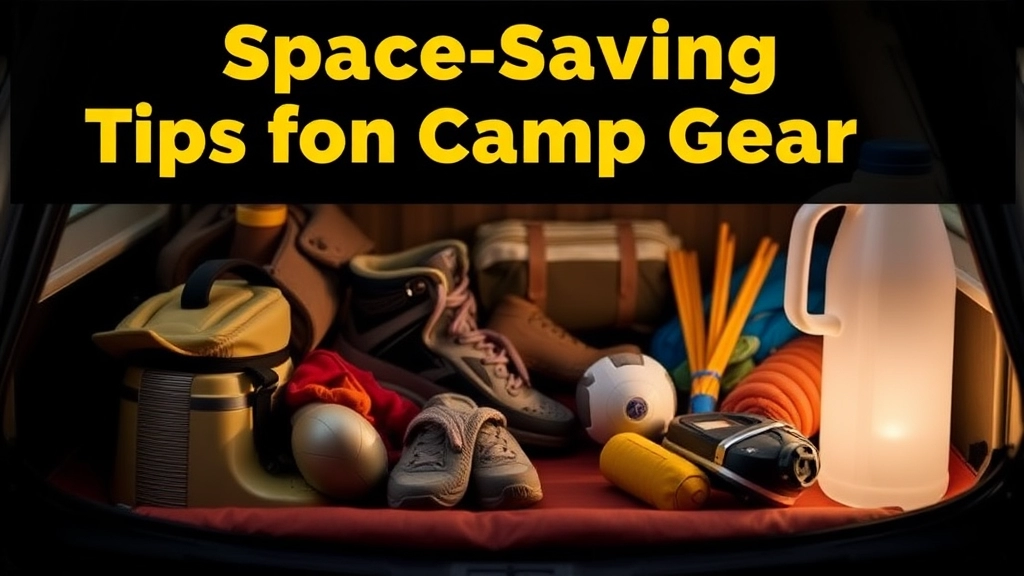
Ever felt like you’re trying to fit a square peg in a round hole when packing for camp? Yeah, me too.
Let’s dive into some space-saving tips that’ll make packing camp gear as easy as pie.
Why is Packing for Camp Such a Headache?
You’ve got a ton of gear and not enough room.
Sound familiar?
Worry not, I’ve got your back.
Roll, Don’t Fold
First off, rolling your clothes instead of folding them is a game-changer.
- Saves space: Rolled clothes take up less room.
- Reduces wrinkles: No one wants to look like a crumpled mess at camp.
Use Compression Bags
Compression bags are your new best friend.
- Shrink bulky items: Perfect for jackets and sleeping bags.
- Waterproof: Keeps your stuff dry.
Multi-Use Items
Bring gear that does double duty.
- Convertible pants: Shorts and trousers in one.
- Microfiber towels: Lightweight and quick-drying.
Nesting Gear
Think Russian dolls.
- Nesting pots and pans: Save a ton of space.
- Stackable containers: Perfect for food and small items.
Leave the Non-Essentials Behind
Be ruthless. If it’s not essential, it doesn’t go.
- Duplicate items: One is enough.
- Heavy books: Opt for a Kindle or leave them out.
Use Every Nook and Cranny
Maximise every inch.
- Fill shoes with socks: Don’t waste that space.
- Utilise small pockets: Perfect for gadgets and chargers.
Vacuum-Sealed Bags
For those who need every cubic inch.
- Suck out the air: Compresses your clothes even more.
- Reusable: Eco-friendly and practical.
Personal Story: My Packing Nightmare
Once, I packed for a camping trip and couldn’t fit everything in my bag.
I ended up leaving half my gear behind.
But after discovering these tips, I managed to pack everything I needed and still had room to spare.
Staying Organized with Packing Hacks
Ever feel like packing for camp is like trying to solve a Rubik’s Cube blindfolded? Yeah, me too. But don’t sweat it. Staying organized with packing hacks can turn that chaos into a well-oiled machine. Let’s dive into some real talk on how to keep your sanity intact while packing for camp.
Packing Cubes: Your New Best Friend
First off, packing cubes are a game-changer. These little fabric boxes help you compartmentalize everything. Here’s why they’re essential:
- Separation of gear: Keep your socks away from your shirts, and your toiletries away from your snacks.
- Easy access: No more rummaging through the entire bag to find that one missing item.
- Space savers: Compress your clothes and save space for more important stuff.
Roll, Don’t Fold
Rolling your clothes instead of folding them can save a ton of space. Plus, it helps to reduce wrinkles. Here’s a quick breakdown:
- T-Shirts and Tops: Roll them tightly and stack them vertically in your packing cubes.
- Trousers and Shorts: Same deal. Roll and stack.
- Underwear and Socks: Roll and tuck them into the small nooks and crannies of your bag.
Ziploc Bags: Not Just for Sandwiches
Ziploc bags are another unsung hero of packing. They’re perfect for:
- Toiletries: Keep your shampoo from leaking all over your clothes.
- Electronics: Protect your gadgets from unexpected rain showers.
- Snacks: Keep your food fresh and critter-free.
Label Everything
Labelling isn’t just for the ultra-organized. It’s practical. Use a permanent marker or label maker to:
- Tag your packing cubes: Know exactly where your socks are without opening every cube.
- Mark your bags: Make sure your bag stands out in a sea of identical duffels.
Essential Toiletries and Hygiene Tips
Keep your toiletries minimal but effective. Think of the essentials:
- Travel-sized bottles: Shampoo, conditioner, and body wash.
- Toothbrush and toothpaste: Obvious but often overlooked.
- Wet wipes: For those days when a shower isn’t an option.
Space-Saving Tips for Camp Gear
Camp gear can be bulky, but there are ways to trim the fat:
- Multi-use items: A Swiss Army knife can replace several tools.
- Collapsible gear: Look for foldable water bottles and collapsible bowls.
- Lightweight options: Opt for lightweight sleeping bags and tents.
What to Avoid Packing for Camp
Avoid packing items that will just weigh you down:
- Excessive clothes: Pack versatile pieces you can mix and match.
- Heavy books: Opt for a Kindle or just one good book.
- Bulky gadgets: Leave the laptop at home.
Tips for a Comfortable Sleep
A good night’s sleep is crucial. Here’s how to ensure comfort:
- Invest in a good sleeping bag: One that’s appropriate for the weather.
- Bring a pillow: Even an inflatable one can make a huge difference.
- Earplugs and a sleep mask: Block out noise and light for better sleep.
Special Surprises to Include in Your Child’s Bag
Lastly, don’t forget the little touches that make camp special:
What to Avoid Packing for Camp
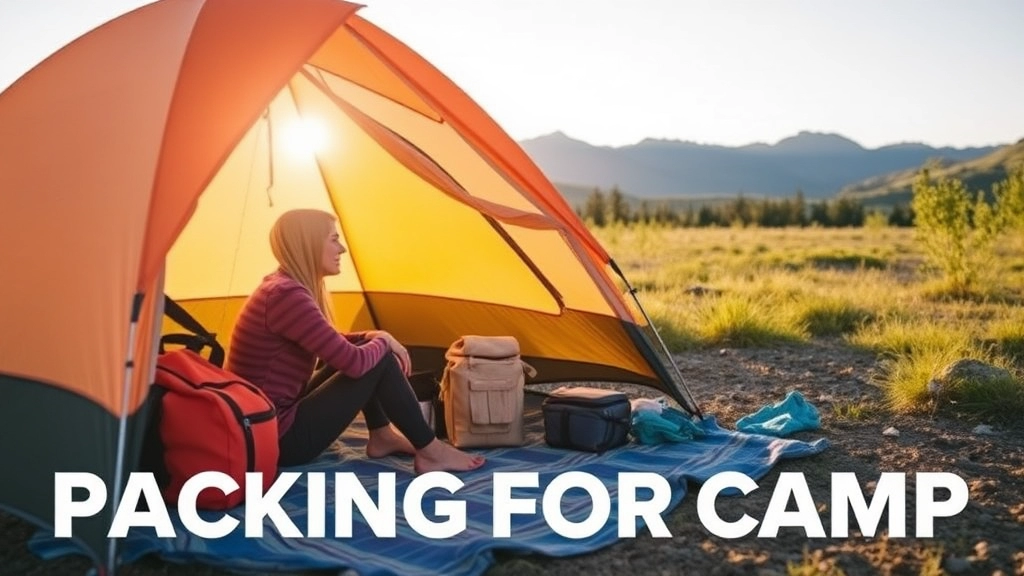
Ever wondered what NOT to pack for camp?
I’ve seen it all, and trust me, avoiding these common pitfalls can save you loads of hassle.
Let’s dive in.
Unnecessary Electronics
First off, leave the gadgets at home.
- No one needs a tablet or a gaming console in the wilderness.
- Camps usually have strict no-electronics policies.
- Plus, it’s a great chance for your child to unplug and enjoy nature.
Expensive Items
Next up, don’t pack anything valuable.
- Jewellery, fancy watches, or designer clothes? Not worth the risk.
- These items can easily get lost or damaged.
- Stick to practical, durable gear.
Too Many Clothes
Overpacking clothes is a rookie mistake.
- Pack enough, but don’t go overboard.
- A few versatile outfits should do the trick.
- Remember, camp is about getting dirty and having fun, not fashion shows.
Junk Food
Avoid sending your kid off with a stash of sweets.
- Camps usually provide balanced meals and snacks.
- Excessive sugar can lead to energy crashes and mood swings.
- Plus, it can attract unwanted critters to their sleeping quarters.
Sharp Objects
This one’s a no-brainer, but still worth mentioning.
- No knives or sharp tools unless specifically required by the camp.
- Safety first, always.
Heavy Books
Books are great, but don’t pack a library.
- One or two light reads are fine.
- Stick to something they can easily carry around.
Non-Essential Toiletries
Don’t go overboard with the toiletries.
- Basic hygiene items are enough.
- Camps often provide essentials like soap and shampoo.
- Leave the luxury skincare routine at home.
Too Many Shoes
Shoes can take up a lot of space.
- One pair of sturdy hiking boots and a pair of comfortable trainers should suffice.
- Maybe some flip-flops for the shower, but that’s it.
Irreplaceable Items
Finally, anything irreplaceable should stay at home.
- Sentimental items, family heirlooms, or anything you’d be devastated to lose.
- The camp environment is unpredictable; better safe than sorry.
Got any packing tips or horror stories? Share them in the comments below!
And if you’re still unsure about what to pack, check out our Mastering the Packing List guide for a comprehensive rundown.
Happy camping!
Tips for a Comfortable Sleep
Ever tossed and turned all night in a sleeping bag? Yeah, me too. Let’s face it, getting a good night’s sleep while camping is no walk in the park. But it doesn’t have to be a nightmare either. Here are some practical tips to ensure you and your little one sleep like a log, even in the great outdoors.
Choose the Right Sleeping Bag
First things first, the sleeping bag. It’s the foundation of a good night’s sleep. Make sure it’s appropriate for the weather conditions:
- Summer Camping: Go for a lightweight sleeping bag.
- Winter Camping: Opt for a heavy-duty, insulated sleeping bag.
- Versatile Options: Consider a three-season sleeping bag for flexibility.
Invest in a Quality Sleeping Pad
Don’t skimp on the sleeping pad. It’s not just about comfort; it insulates you from the cold ground. Look for:
- Foam Pads: Affordable but bulky.
- Inflatable Pads: Compact and comfy but can puncture.
- Self-Inflating Pads: Best of both worlds, but can be pricey.
Bring a Pillow from Home
A small but game-changing tip: pack a pillow from home. Familiarity can bring comfort, and it’s a small luxury worth the extra space.
Layer Up
Temperature can drop unexpectedly at night. Layering is key:
- Base Layer: Moisture-wicking fabric.
- Middle Layer: Insulating material like fleece.
- Outer Layer: Waterproof and windproof.
Keep a Night Routine
Just because you’re camping doesn’t mean you should ditch the bedtime routine. Stick to familiar rituals:
- Brush Teeth: Keeps hygiene in check.
- Read a Book: Calms the mind.
- Warm Drink: A cup of hot chocolate can be soothing.
Block Out Noise
Nature is beautiful but noisy. Birds, insects, and the wind can disrupt sleep. Consider:
- Earplugs: Simple and effective.
- White Noise App: If you have a portable charger, this can be a lifesaver.
Stay Dry
Nothing ruins sleep faster than being wet. Ensure:
- Waterproof Tent: Check for leaks before you go.
- Dry Clothes: Always have a set of dry clothes to change into.
- Rain Cover: For your sleeping bag, just in case.
Personalise Your Space
A little bit of home can go a long way. Let your child bring:
- Favourite Blanket: Adds comfort and warmth.
- Stuffed Animal: Provides emotional security.
- Night Light: A small, battery-operated one can ease fears of the dark.
Hydrate Wisely
Hydration is crucial, but too much water before bed means midnight bathroom trips. Balance it out:
- Drink Early: Hydrate well during the day.
- Limit Intake: Reduce fluids an hour before bed.
Mind the Bugs
Mosquitoes and other bugs can be a real pain. Keep them at bay with:
Special Surprises to Include in Your Child’s Bag
Ever sent your kid off to camp and wondered if they’ll feel homesick?
How about adding a little magic to their bag?
Surprise Notes and Letters
- Handwritten Notes: Slip in a few notes with jokes or encouraging words.
- Daily Letters: Write short letters for each day they’re away.
Comfort Items
- Favourite Stuffed Animal: Even if they say they’ve outgrown it.
- Family Photos: A small album or a few pics can make a big difference.
Fun and Games
- Mini Board Games: Compact versions of their favourites.
- Puzzle Books: Keeps them entertained during downtime.
Treats and Snacks
- Favourite Sweets: A little taste of home.
- Healthy Snacks: Think granola bars or dried fruit.
Personal Touches
- Customised Water Bottle: With their name or favourite design.
- Decorative Stickers: For personalising their camp gear.
Practical Surprises
- Extra Batteries: For their torch or favourite gadgets.
- Portable Charger: Essential for any tech they’re allowed to bring.
Inspiration and Motivation
- Inspirational Quotes: On small cards they can keep in their pocket.
- Books: A favourite read or something new and exciting.
Craft Kits
- DIY Bracelets: Something they can make and share with new friends.
- Colouring Supplies: Small and easy to pack.
Special Tokens
- Lucky Charm: Something small and meaningful.
- Friendship Bracelets: One for them, one for you.
Why These Surprises Matter
These little touches can turn any moment of homesickness into a moment of joy.
They remind your child that you’re thinking of them.
They offer comfort and fun, making their camp experience even better.
For more ideas on how to keep your child entertained, check out our fun summer camp crafts for kids and explore some top games to play at summer camp.
FAQs on Summer Camp Packing Hacks
What are packing cubes and why should I use them?
Packing cubes are small, zippered bags that help organize your clothes and gear. They keep everything neat and easy to find, saving you from digging through a messy bag.
How should I organize my clothes using packing cubes?
Sort your clothes by category: tops in one cube, bottoms in another, and underwear and socks together. This makes it simple to locate what you need quickly.
Should I roll or fold my clothes for packing?
Rolling your clothes is recommended as it saves space and keeps your clothes wrinkle-free.
What sizes of packing cubes should I use?
Use small cubes for underwear and socks, medium cubes for t-shirts and shorts, and large cubes for bulkier items like jackets or jeans.
Why is labeling and personalizing items important for camp?
Labeling helps ensure that your child’s belongings come back home. Camps can be chaotic, and labeling items reduces the risk of lost items.
What are some effective ways to label camp items?
Use permanent markers, iron-on labels, or sew-on labels. These methods are durable and can withstand the wear and tear of camp life.
How can I make labeling fun for my child?
Personalize items with stickers, patches, colored tape, and keychains. This not only makes their belongings unique but also adds a touch of fun.
What are some space-saving tips for packing camp gear?
Roll your clothes, use compression bags, bring multi-use items, and nest gear like pots and pans. Also, utilize every nook and cranny, such as filling shoes with socks.
What items should I avoid packing for camp?
Avoid unnecessary electronics, expensive items, too many clothes, junk food, sharp objects, heavy books, non-essential toiletries, too many shoes, and irreplaceable items.
Why shouldn’t I pack unnecessary electronics for camp?
Camps usually have strict no-electronics policies, and it’s a great opportunity for your child to unplug and enjoy nature.
What kind of toiletries should I pack for camp?
Stick to basic hygiene items. Camps often provide essentials like soap and shampoo, so there’s no need to pack an extensive skincare routine.
How many pairs of shoes should I pack for camp?
One pair of sturdy hiking boots, a pair of comfortable trainers, and possibly a pair of flip-flops for the shower should suffice.
Can you share a personal experience with packing for camp?
Last summer, I packed for a week-long camp using packing cubes. It was a game changer. I knew exactly where everything was, and it made unpacking a breeze.
What are some bonus tips for packing efficiently?
Color code your packing cubes for different family members and label your cubes to save time. Also, be ruthless about what you pack and stick to the essentials.
Where can I find more tips on packing for camp?
Check out our guides on Mastering the Packing List and Weather-Proofing Your Packing for more comprehensive tips.
References
-
Packing Light: Expert Advice from REI
-
How to Pack with Packing Cubes by Travel Fashion Girl
-
10 Ultralight Backpacking Tips from CleverHiker

